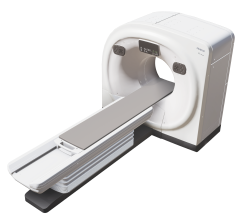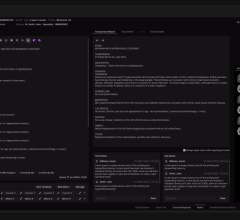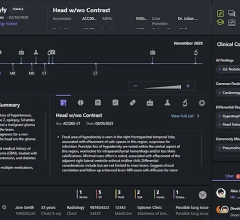
Greg Freiherr has reported on developments in radiology since 1983. He runs the consulting service, The Freiherr Group.
Agents of Change: Interoperability Standards Offer Carrot Over Stick

For a brief time — from the mid-1980s to mid-1990s — teleradiology was exemplified by camera-on-a-stick technology. It was a simple set up: a lightbox lying flat on a table illuminate radiographs; a digital camera with a zoom lens suspended above, usually by a wire frame, takes pictures; a desktop PC records and transmits them over a modem.
It saved the radiologist for whom I consulted from having to drive among his several imaging centers the same way faxes reduced overnight delivery of documents. And, like faxed documents, the transmitted images looked enough like the original radiographs to get the job done. Faxed documents and images were used for a single purpose — reconstruction into copies of the original.
Today's digital images, by contrast, are interoperable. The signals that comprise them — if they are DICOM-compliant — can be stored, reconstructed for display on a range of viewers, even deconstructed into bits of data.
Reliance On Standards
It's fair to say that DICOM (Digital Imaging and Communications in Medicine) revolutionized radiology. The standard, which has gone through several revisions since its founding a couple decades ago, makes every piece of imaging equipment work with the next, generating images that can be read, stored and transmitted regardless of which company made the equipment or when. It is the reason PACS work.
Recently the effect of DICOM has been extended with rules for encoding radiology reports. DICOM Structured Report (SR) allows the storage and transmission of reports with images and waveforms, as well as spatial and temporal coordinates. DICOM SR, working in concert with another standard — Health Level 7 (HL7) — is paving the way from radiology to other "ologies" through the display of radiological information on healthcare workstations and Web-enabled monitors in and outside the enterprise.
The adoption and use of these standards exemplify the medical community's long dependence on standards. HL-7, like DICOM, has been around for more than 20 years. The dependence of modern medicine on standards will become more acute as providers rely increasingly on the interoperability of information technologies.
Critically important for this future is a still evolving standard called FHIR (HL7 Fast Healthcare Interoperability Resources). Luminaries have described FHIR as the key to unlocking solutions to the complex interoperability challenges now facing modern healthcare.
Effects Of FHIR
This latest standard, when implemented, is expected to allow systems to exchange pieces of information contained within documents. This will eliminate the current need to share whole documents.
According to Health Level Seven International, FHIR is the next generation of standards framework. It leverages "existing logical and theoretical models to provide a consistent, easy to implement, and rigorous mechanism for exchanging data between healthcare applications." When in final form, FHIR may be used alone as a data exchange standard, or more likely in concert with other standards.
Also referred to as an application programming interface, FHIR has enormous implications for healthcare. With FHIR-based software, a physician might request and receive a single piece — or granule — of information about a patient, whereas otherwise several documents might have to be transferred.
Those granules might be specific results from a pathology lab, a medication list or information pulled from a patient history. Toward this end, FHIR provides the basis for developing tools that can extract and transmit this information.
American consumers are already using similar software tools when they use Google, Facebook or Yahoo. For example, when looking for a good, nearby restaurant, Google pulls and assembles data from different locations to answer your question.
The ability to do this for radiological and other medical information may ultimately determine the success of enterprise imaging and its goal of making patient data efficiently available to all caregivers.
That, however, could take a while.
Not Yet Ready For Prime Time
The standard at present is not "mature." It is, however, getting close. FHIR was released March 21, 2017, in the standard for trial use (STU) 3 version. This version is described by HL-7 International as a major leap forward in functionality, maturity and stability. The last "leap," which could happen before the year is out, is to freeze FHIR into a stable, "normative" version, which could then be widely adopted.
In the meantime, Health Level Seven International has scheduled a summit on April 11 - 12, 2017, to demonstrate to third-party payers and providers how the new standard might improve information exchange pertaining to value-based care.
FHIR is expected to make programming relatively simple and provide better support for access to data. Its true value, however, may not be known until the standard is widely applied and proven effective. This may require millions of lines of code to be written and billions of patient records to be accessed.
Luminaries in the information technology community, however, are all but certain this future will come.
Editor’s note: This is the second blog in four-part series on Agents of Change. The first blog, “iPads On Track To Be Radiologists' BYOD of Choice,” can be found here.


 December 09, 2025
December 09, 2025 









